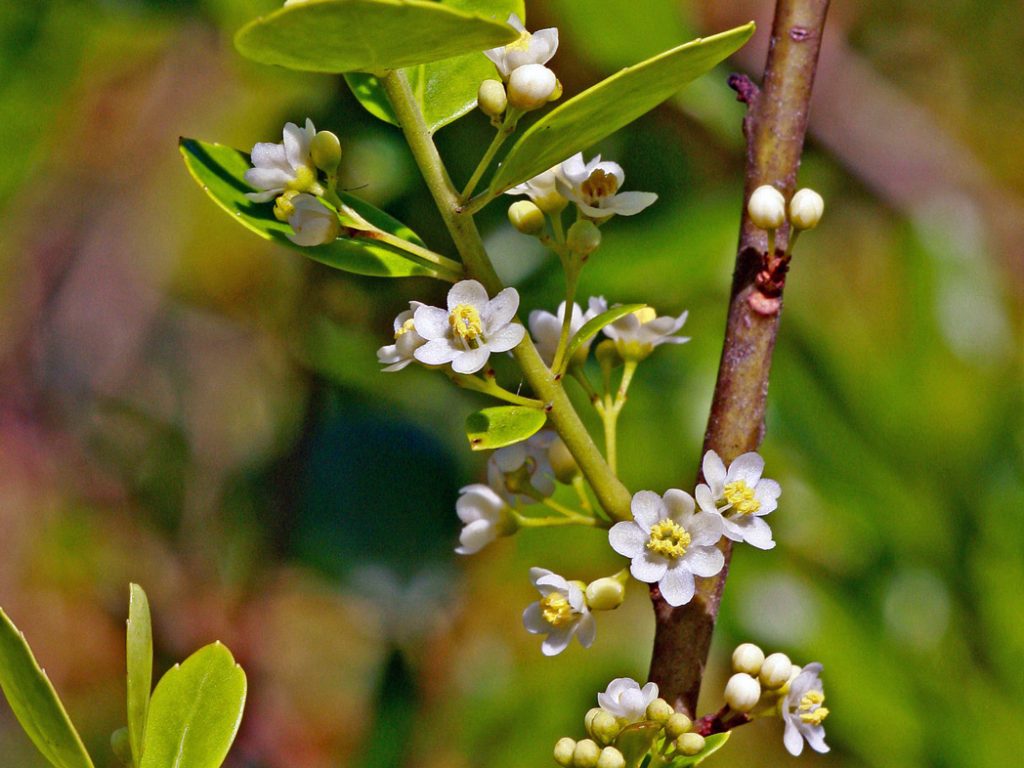Let’s delve into the captivating world of gallberry, a native plant that not only beautifies the landscapes of Florida but also plays a crucial role as a pollinator. Whether you’re an avid gardener, nature enthusiast, or simply curious about the fascinating flora of the region, this article will provide you with valuable insights on how to care for gallberry and its importance in supporting local ecosystems.
Understanding Gallberry
Gallberry, scientifically known as Ilex glabra, is
an evergreen shrub native to the southeastern
United States, particularly prevalent in the sandy
soils of Florida. This species belongs to the holly
family and exhibits distinctive features such as
leathery dark green leaves, small white flowers,
and glossy black berries that persist throughout
the winter months.

Photo by Florida Wildflower Foundation
The importance of gallberry lies in its role as a pollinator magnet. The shrub’s fragrant flowers attract various insects, including bees, butterflies, and other nectar-loving creatures. As they visit the blossoms in search of nectar, these pollinators inadvertently transfer pollen from one flower to another, facilitating the plant’s reproductive process. This ecological partnership is crucial for the preservation of plant diversity and the
sustainability of local ecosystems.
Florida-Friendly Gardening with Gallberry
Florida-friendly garden. Here are some key tips to ensure its optimal growth and health:
- Location and Soil: Gallberry thrives in partial shade to full sun conditions. It adapts well to various soil types, including sandy or loamy soils common in Florida. Ensure adequate drainage to prevent waterlogging, which can be detrimental to the plant’s health.
- Watering: Once established, gallberry is moderately drought-tolerant. However, it’s essential to provide regular watering during dry spells, especially during the plant’s early growth stages. Aim for deep, infrequent watering to encourage robust root development.
- Pruning and Maintenance: Pruning can be done in late winter or early spring to maintain a desired shape and size. Remove any dead or diseased branches to promote overall plant health. Applying a layer of organic mulch around the base of the shrub helps retain moisture and suppress weeds.
Where Can I Get Gallberry?
After reading this guide, we hope that your interest in this beautiful and unique plant has peaked. If you are local to Orlando and are looking to purchase Gallberry and other native and/or Florida-friendly plants, you can shop at Fleet Farming’s nursery! Through your purchase, you will be supporting a very active environmental nonprofit organization with the goal to empower all generations to grow their own food . Stop by during our business hours, or shop online by filling out our form: https://fleetfarming.org/greenhouse-plant-sale-orlando/








